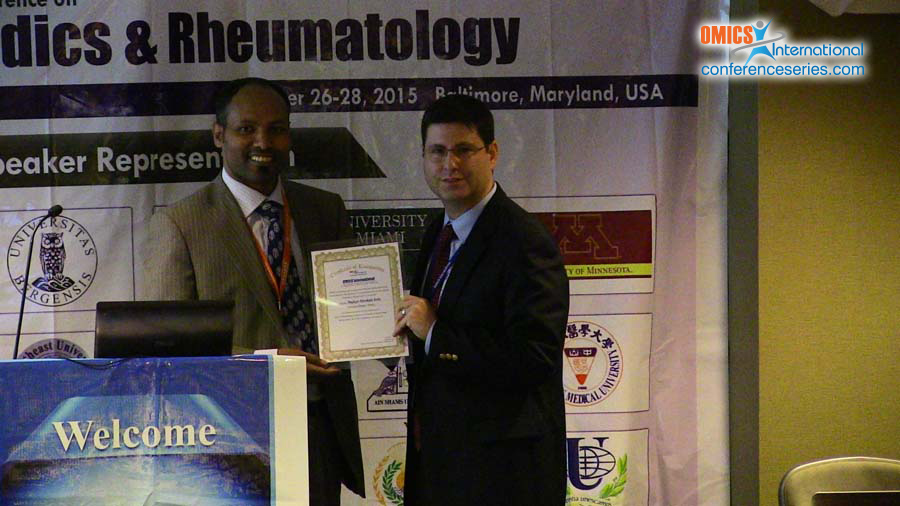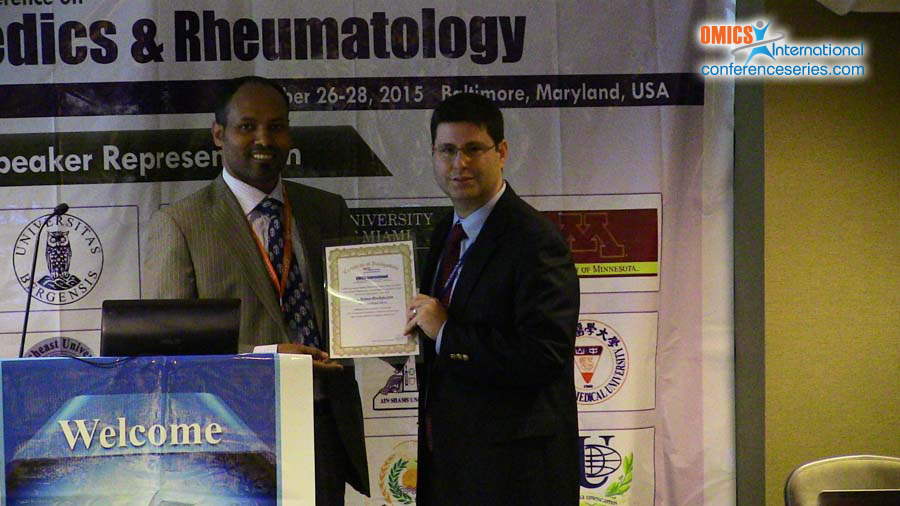
Tesfaye Hordofa Leta
University of Bergen, Norway
Title: The outcome of unicompartmental knee arthroplasties after aseptic revision into total knee arthroplasties
Biography
Biography: Tesfaye Hordofa Leta
Abstract
Background: The general recommendation for a failed primary unicompartmental knee arthroplasty (UKA) is revision to a total knee arthroplasty (TKA). Many surgeons prefer to use UKAs in younger patients to postpone TKA believing that the results after revision from a UKA to a TKA is equal to a primary TKA and better than a revision TKA. For this to be true the rev-UKA should outperform the rev-TKA. The purpose of the present study was to compare the outcomes, surgical procedures, and mode of failure of failed primary UKAs and primary TKAs revised to TKAs. Method: The study was based on 768 failed primary TKAs revised to TKAs (rev-TKAs) and 578 failed primary UKAs revised to TKAs (rev-UKAs) and reported to the Norwegian Arthroplasty Register between 1994 and 2011. Patient-reported outcome measures (PROMs) including the EQ-5D, the Knee Injury and Osteoarthritis Outcome Score (KOOS), and Visual Analogue Scales assessing satisfaction and pain were used. Kaplan-Meier and Cox-regression analyses were performed to assess the survival rate and the risk of re-revision. The independent student’s t-test and multiple linear regression were used to estimate the differences in mean scores in PROMs between the two groups. Results: Overall, 12% of rev-UKAs and 13% of rev-TKAs were re-revised between 1994 and 2011. The 10 years survival percentage of rev-UKAs vs rev-TKAs was 82 vs 81%, respectively (p=0.1). There was no difference in the overall risk of re-revision for rev-UKAs vs rev-TKAs (RR= 1.3; p=0.1), nor did we find any differences in the PROM scores. However, the risk of re-revision was 2 times higher for rev-TKA patients aged over 70 years (RR= 2.2; p=0.04). Loose tibia (28 vs 17%), pain alone (22 vs 12%), instability (19 vs 19%), and deep infection (16 vs 31%) were major causes of re-revision for rev-UKAs vs rev-TKAs, respectively but the observed differences were not statistically significant. The surgical procedure for rev-TKAs took longer time (mean=150 vs 114 minutes) and more of the operations needed stems (58 vs 19%), and stabilization (27 vs 9%) compared to rev-UKAs. Conclusion: Despite the surgical procedure of rev-TKA seeming technically more difficult compared to that of rev-UKA, the mode of failure and the overall outcome of rev-UKAs and rev-TKAs were similar. Thus, the argument that the outcome of revising UKA to TKA is similar to primary TKA could not be supported by the present study findings.


